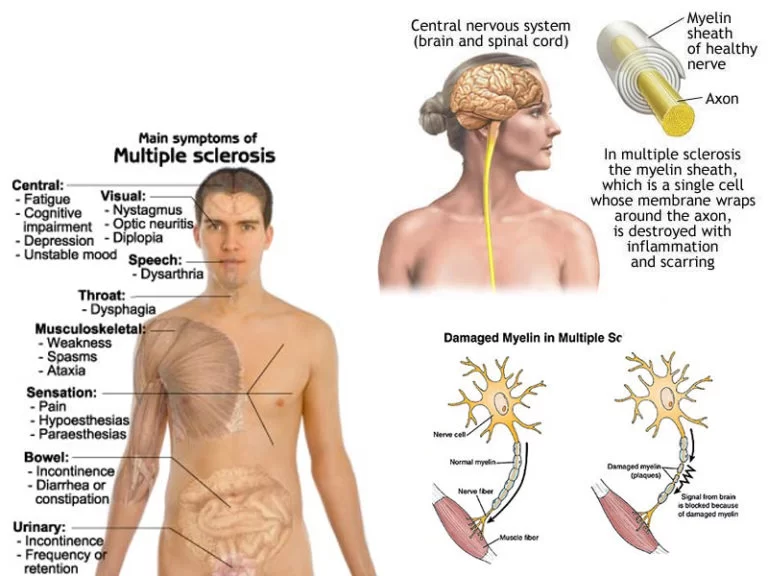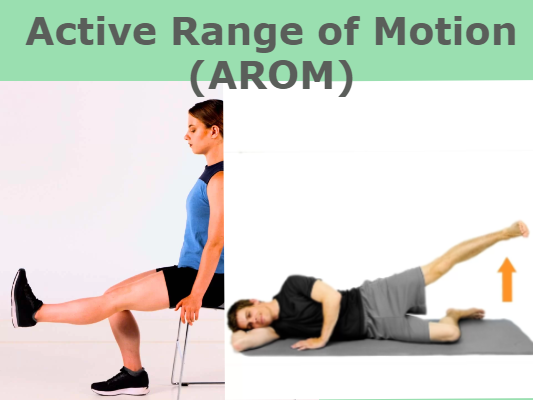8 Best Exercises For Polycystic Ovary Syndrome (PCOS)
Introduction
Polycystic Ovary Syndrome (PCOS) is a common hormonal disorder that affects individuals assigned to females at birth, often during their reproductive years. It is characterized by various symptoms, including irregular menstrual cycles, high levels of androgens (male hormones), and the presence of small cysts on the ovaries. PCOS can lead to a range of health issues, including fertility problems, insulin resistance, and an increased risk of diabetes and cardiovascular disease.
Exercise is considered an important aspect of managing PCOS, as it can help improve insulin sensitivity, regulate hormonal balance, and promote overall well-being. However, it’s crucial to consult with a healthcare professional before starting any exercise program, especially for individuals with PCOS, as each person’s condition may vary.
Incorporating both aerobic exercises and strength training into a fitness routine can be beneficial for individuals with PCOS. Aerobic exercises, such as brisk walking, jogging, cycling, or swimming, can help improve cardiovascular health and aid in weight management. Strength training exercises, including resistance training and bodyweight exercises, can contribute to muscle development, which may assist in regulating insulin levels.
What is PCOS?
The most prevalent endocrine disorder affecting women who are fertile globally is called polycystic ovarian syndrome, or PCOS. In 1935, Stein and Leventhal gave their first description. The prevalence might vary from 5% to 15%, according to the diagnostic standards used. According to specialised society recommendations, PCOS must be diagnosed based on the presence of two out of the three criteria listed below: polycystic ovaries, clinical or biological hyperandrogenism, and persistent anovulation.
Since it’s an exclusion diagnosis, conditions that resemble PCOS’s clinical characteristics must be ruled out. These include non-classical congenital adrenal hyperplasia, hyperprolactinemia, and thyroid illness. If clinical characteristics point to additional reasons, a more thorough workup may be necessary for a particular patient.
Even though PCOS is quite common, it is frequently incorrectly diagnosed and demands many visits or evaluations by multiple doctors, all of which happen over a longer period of time than a year. For the patient, it is a very annoying process. A delayed evaluation might cause symptoms to aggravate the condition, which makes it more difficult for patients to make lifestyle modifications, which are essential for improving PCOS symptoms and quality of life.
PCOS is related to a number of morbidities, such as endometrial cancer, depression, obstructive sleep apnea (OSA), obesity, metabolic syndrome, impaired glucose tolerance, type 2 diabetes mellitus (DM-2), endometrial cancer, and nonalcoholic fatty liver disease/nonalcoholic steatohepatitis (NAFLD/NASH). For each of these illnesses, there are several screening guidelines; nevertheless, if a patient has PCOS, the practitioner has to have a low bar for workup.
Causes of PCOS:
PCOS is a complicated illness. Numerous susceptibility genes have been shown to have a role in the disease’s pathogenesis. These genes participate in androgenic pathways and steroidogenesis at different degrees. About 70% heritability has been estimated from twin studies.
The expression of these genes, as well as the onset and course of the illness, are significantly influenced by the environment. According to two widely accepted theories, PCOS traits manifest in people who have a genetic predisposition and are exposed to specific environmental variables. Two of the most prevalent environmental variables are insulin resistance and obesity. Foetal androgen exposure is another theory that has been put forth.
Epidemiology of PCOS:
As previously stated, depending on the diagnostic criteria, PCOS affects 5% to 15% of girls in the reproductive age range globally, making it the most prevalent endocrine disorder. Compared to the 1990 National Institute of Health standards, the Rotterdam standards include a wider range of prevalence. It is estimated that around 5 million females in the United States who are of reproductive age suffer from PCOS, according to the NIH 2012 workshop report. Without accounting for the expense of the significant comorbidities connected to PCOS, the yearly cost to the healthcare system for PCOS diagnosis and treatment is estimated to be $4 billion.
Multiple conditions have been related to PCOS, involving infertility, metabolic syndrome, obesity, poor glucose tolerance, DM-2, cardiovascular risk, depression, OSA, endometrial cancer, and NAFLD/NASH. A greater incidence has been related to first-degree blood relatives with PCOS, prepubertal obesity, congenital virilizing disorders, above-average or low birth weight for gestational age, premature adrenarche, and the use of valproic acid as an antiepileptic medicine. Research studies also indicate that there is a greater incidence of Mexican Americans than non-Hispanic whites and African Americans.
Pathophysiology of PCOS
PCOS is an oligo-anovulation hyperandrogenic condition that defies explanation by any other illness. It’s an exclusionary diagnosis. All the same, it explains most hyperandrogenic appearances. Functional ovarian hyperandrogenism is the aetiology of nearly all cases of PCOS (FOH). Typical functional ovarian hyperandrogenism, which is defined by dysregulation of androgen production and an excess of 17-hydroxyprogesterone (17-OHP) in response to gonadotropin stimulation, is present in two-thirds of PCOS presentations. The residual atypical FOH PCOS does not exhibit an overreaction to 17-OHP; rather, a testosterone increase can be identified following the suppression of adrenal androgen synthesis. An associated isolated functional adrenal hyperandrogenism affects around 3% of PCOS patients. The remaining PCOS instances are of a minor kind. The majority of these individuals are obese, which practitioners believe explains their atypical PCOS; nevertheless, there is no evidence of steroid secretory abnormalities in these patients. These days, specific testing for the FOH subgroup has little therapeutic value.
Ovarian hyperandrogenism in function:
The three main symptoms of PCOS are polycystic ovarian morphology, oligoanovulation, and hyperandrogenism. There are several contributing causes of functional ovarian hyperandrogenism, including both environmental and genetic ones. An innate imbalance among intraovarian regulatory systems and excess insulin, which is known to sensitize the ovary to luteinizing hormone (LH) by interfering with the process of homologous desensitization to LH in the normal ovulation cycle, are the causes of this dysregulation. The majority of steroidogenic enzymes and proteins associated with androgen production are overexpressed in theca cells in PCOS, which suggests a significant anomaly in the level and activity of steroidogenic enzymes, including the well-known P450c17. The main causes of granulosa cell premature luteinization are high insulin and androgen levels.
The hormone androgen extra boosts the beginning recruitment of the initial follicles into the growth pool. Meanwhile, it begins premature luteinization, which affects the selection of the primary follicle. This leads to the gross anatomic alterations and characteristic PCOS histopathologic abnormalities that make up PCOM. Increased LH does not cause PCOS; rather, it is a factor that perpetuates it. Although gonadal steroidogenic enzyme expression and sex hormone release depends on excess LH, LH-induced desensitization of theca cells makes it less probable that excess LH is the main source of ovarian androgen excess.
Atypical levels of insulin-resistant hyperinsulinism, which work on theca cells to increase steroidogenesis and prematurely luteinize granulosa cells, as well as to induce fat formation, are present in around half of individuals with functional ovarian hyperandrogenism. Excess LH is triggered by hyperandrogenism and acts on the luteinized granulosa-sustaining cycle as well as the theca. A proportional increase in the production and secretion of levotropin (H) compared to follicle-stimulating hormone (FSH) might result from changes in the pulsatile release of gonadotropin-releasing hormone (GnRH) caused by dysregulation of the ovaries. While the relative decrease in FSH inhibits appropriate activation of aromatase activity inside the granulosa cells, thereby lowering androgen conversion to the powerful oestrogen estradiol, LH promotes ovarian androgen synthesis. This develops into a noncyclic, self-replicating hormonal rhythm.
Peripherally, elevated serum androgens are converted to oestrogens, mostly estrone. Obese PCOS individuals will produce more oestrogen since conversion mostly takes place in the stromal cells of adipose tissue. Unlike the regular oscillations in feedback seen in the presence of a developing follicle and quickly fluctuating estradiol levels, this conversion causes persistent feedback at the pituitary and brain. Endometrial hyperplasia may result from the endometrium’s unopposed oestrogen stimulation.
Symptoms of PCOS:
Some women have symptoms around the time of their first menstrual cycle. Some people don’t realise they have PCOS until they’ve had significant weight gain or difficulty becoming pregnant.
Some of the most typical signs of PCOS are:
- Period irregularities: The monthly removal of the uterine lining is hindered by a lack of ovulation. Some women with PCOS get less than eight cycles, or none at all.
- Excessive bleeding: The lining of your uterus thickens over time, resulting in heavier-than-normal periods.
- Hair growth: On their faces and bodies, especially their backs, bellies, and chests, more than 70% of women with this illness grow hair. Hirsutism is the word for excessive hair growth.
- Acne: Hormones specific to men can increase sebum production and lead to outbreaks on the face, chest, and upper back.
- Gained weight: At least 80% of PCOS-afflicted women are overweight or obese.
- Male pattern baldness: The scalp’s hair thins and may eventually fall out.
- Skin darkening: In creases such as those on the neck, groin, and beneath the breasts, dark patches of skin may develop.
- Headaches: Hormonal fluctuations might cause headaches in certain women.
How does your body react to PCOS?
Overly elevated androgen levels might affect your fertility as well as other aspects of your health.
- Infertility: You need to ovulate in order to become pregnant. The quantity of eggs produced for fertilization decreases with infrequent ovulation. One of the main reasons women are infertile is PCOS.
- Metabolic syndrome: Obesity or excess weight affects up to 80% of women with PCOS. Your risk for high blood pressure, high blood sugar, low HDL (good) cholesterol, and high LDL (bad) cholesterol is increased by obesity and PCOS. These elements together are referred to as metabolic syndrome, and they raise the risk of stroke, diabetes, and heart disease.
- Sleep apnea: This disorder results in frequent breathing pauses during the night, disrupting sleep. Women who are overweight, especially those who also have PCOS, are more prone to experience sleep apnea. Women with PCOS who are also obese have a five- to ten-fold increased risk of sleep apnea compared to women without PCOS.
- Endometrial cancer: The lining of the uterus sheds during ovulation. If you don’t ovulate every month, the lining could build up. A thicker lining in your uterus may increase your risk of endometrial cancer.
- Depression: Hormonal fluctuations and associated symptoms, such as excessive hair growth, can have a detrimental emotional impact. Many PCOS patients experience anxiety and hopelessness as frequent effects.
Exercise and PCOS
Women with PCOS experience greater instances of resistance to insulin in comparison with women who do not have the hormonal imbalance. Insulin resistance impacts your body’s capacity to use glucose from the bloodstream as fuel.
According to the National Institute of Diabetes and Digestive and Kidney Diseases, doctors have linked obesity and a lack of physical activity as possible causes of insulin resistance. Not every PCOS-affected woman is overweight. The good news is that, regardless of your weight, you can still benefit from physical activity for your health if you have PCOS.
- Reducing BMI:
- According to a Frontiers in Physiology study, a meta-analysis of 16 studies on PCOS and exercise revealed that the most effective way to lower body mass index (BMI) and insulin resistance in PCOS-affected women was to engage in high-intensity aerobic exercise.
- The researchers contrasted intense and moderate activity. They also discovered that the biggest reductions in BMI were attained with therapies involving a balanced diet and intense exercise.
- Managing weight:
- Exercise was found to be beneficial in lowering weight, abdominal fat, and fasting insulin levels in a study evaluation of lifestyle treatments in PCOS.
- The research also discovered that exercise might assist PCOS-afflicted women of all weight ranges in either maintaining or reducing their weight to improve their appearance and overall health.
- Any kind is beneficial:
- A study of the research on the benefits of several exercise types, including strength training and aerobic activity, for women with PCOS could not identify a single exercise style as being particularly helpful. The findings were published in the journal Sports Medicine.
- A few studies compared strength training with aerobic activity, stationary bike riding against outdoor cycling, and moderately intense treadmill walking or running against extreme intensity. The investigators did discover that women with PCOS might benefit from a variety of exercise styles.
These and other studies provide the important message that exercise, especially regular exercise, can assist people with PCOS. Extra points if you can find an activity you love performing for the workout.
Why is working out helpful for PCOS?
- Hormone balance: Exercise helps maintain hormonal balance by raising endorphin levels and lowering insulin and oestrogen levels.
- Enhancing your mood: Individuals with PCOS may be more prone to depression because of hormone abnormalities and symptoms associated with the disease. Regular activity releases endorphins, which are feel-good chemicals.
- Helping with weight loss: Losing weight might be depressing if you have PCOS. Maintaining a nutritious diet and doing regular, enjoyable exercise will help you lose weight.
- Enhancing the quality of your sleep: Exercise helps encourage peaceful slumber. PCOS patients are more likely to experience snoring, sleep apnea, and other problems. Furthermore aggravating these issues is obesity.
- Lowering your chance of diabetes: Exercise that increases insulin sensitivity can lower your chance of developing diabetes.
- Aiding in cholesterol management: Women who have PCOS are more likely to have high cholesterol, which may be lowered with diet and exercise.
- Reducing the risk of cardiovascular diseases: You have a higher chance of developing high blood pressure and cardiovascular disease. Physical activity can improve heart health.
What are the types of Exercises for PCOS?
The best options for you may be found in the list below.
- Walking:

Let’s begin with the easiest. As was said, maintaining some level of physical exercise is usually encouraged for PCOS sufferers. Walking is an easy activity that one can undertake, even if they don’t have the time or energy to do anything else.
Walking for five minutes each day might also help manage your PCOS symptoms and consequences. The morning is the ideal time to accomplish this. You’ll get better results faster if you jog or walk at a fast speed.
- Cardio:

Maintaining an elevated heart rate is crucial for those with PCOS. Workouts that include the heart can assist you in this. Walking is the least prevalent activity; swimming is the highest. If you can swim, you can challenge yourself to set objectives for distance and pace once or twice a week. It will support you in maintaining your energy and physical fitness.
If you are talented in this area, you can also attempt dance and aerobics. Cycling has additional cardiovascular benefits. These gentle workouts might assist you in continuing your usual physical activity regimen while managing PCOS.
- Lightweight Exercise:

Women with PCOS typically gain muscle mass quickly due to their high levels of androgen. They also have problems and difficulties related to weight gain and increased muscle strength as a result of this. Therefore, it is preferable to burn the additional calories in order to prevent such a scenario. Think about performing modest weight training for this at least twice a week.
Always think about working with a professional trainer if you are new to weight training. Establish a regular schedule to meet them for a basic weight training session every few weeks. In this manner, even if you have PCOS, you can keep your weight in check.
- Zumba or Aqua Aerobics:

Workouts in the pool have grown in popularity lately. These are both soothing and beneficial in the event that you are recuperating from PCOS. Zumba, or aqua aerobics, has become popular among ladies. These easy and enjoyable routines assist women with PCOS in maintaining their physical fitness levels without unnecessarily gaining weight.
- Exercise for Strength:

The ideal workouts for PCOS should take into consideration bodyweight and strength training. Exercises that target the triceps, like dips, push-ups, and squats, can help your body work better with insulin. On the other hand, they can also help with muscular growth. Bulking up is not risky unless steroids are used.
With this kind of exercise, you may build muscle using weights, resistance bands, or your own body weight. You may improve your body’s health and fitness with this method. This is useful if you have PCOS and want to keep your weight in check.
- HIIT Exercises:

Exercises such as high-intensity interval training (HIIT) are thought to be crucial for PCOS issues. It entails a rigorous fitness regimen interspersed with relaxation periods. You may incorporate workouts like mountain climbers, tuck jumps, and burpees in this way.
It attempts to increase the benefits of cardio with more intense training. The majority of people think it’s a good approach to keeping your weight and heart healthy. It also helps to improve insulin resistance more quickly.
- Core Strength:

If your weight is of over-ideal quality, you may have lower back pain on a regular basis. It can make the troubles in your PCOS worse. Strengthening your core might help you steer clear of these problems. Your posture can be improved overall by strengthening these muscles, which support your spine.
Exercises that strengthen the core and increase endurance in the pelvis, legs, and upper abdomen are beneficial for PCOS-afflicted women who are attempting to become pregnant. Enhancing these muscles’ core strength will promote a safe pregnancy.
- Mind-Body Practices:

Current clinical research clearly shows the connection between the body and the mind. Women with sound mental health are probably going to bounce back from PCOS quickly. Additionally, it enables quick responses to stress and anxiety without endangering one’s physical or emotional well-being.
These workouts mostly consist of Tai Chi, yoga, and Pilates. These can significantly lessen mental tension and worry, in addition to aiding in weight loss. Thus, for the majority of your PCOS symptoms and consequences, these workouts are your one-stop shop.
The best workout plan for PCOS
- Cardiovascular steady-state workouts:
- These workouts will raise your heart rate to a maximum of 50 to 70 percent when you are exercising gently. You may find your maximal heart rate by deducting your age from 220. Walking, riding a bike, dancing, and taking aerobics courses are examples of this category of aerobic exercise.
- HIIT workouts are those that alternate periods of high-intensity activity with rest intervals. Exercises like mountain climbers, tuck jumps, and burpees are frequently employed in high-intensity interval training. The degree to which you like working out will determine how long you can stick with a habit.
- Exercise at different intensities can be achieved with interval training, although it’s not always necessary to reach your maximal heart rate as with HIIT. This kind of exercise usually involves a variety of activities that are done in the same session to keep your heart rate up.
- Exercises for the mind and body:
- Women with PCOS react physically to stress and anxiety at a higher level. Exercises that target the mind and body, such as yoga, Pilates, and tai chi, have the potential to reduce stress levels and burn calories, both of which can exacerbate PCOS symptoms. So, you should incorporate this into your PCOS exercise regimen.
- Strengthening exercises:
- Use weights, resistance bands, or your own body weight to build more muscle. Strong bones and muscles may be developed with the help of this type of training.
For PCOS therapy, aerobic physical activity should be done for at least half an hour per day. There are several ways that you may include exercise in your life, including the following:
- Create a workout regimen that entails putting up six stations and spending one to two minutes exercising at each one. Examples of exercises include:
- Lunges.
- Crunches.
- Bicep curls.
- Jumping jacks.
- 30 to 45 minutes of daily walking outside or on a treadmill is recommended.
- Take an aerobics class, either in person or online. Some examples include dancing, boxing, and spinning.
- Use HIIT training, either in-person or online. You may complete a number of YouTube fitness instructions at home. Just be sure the regimen’s supplier is trustworthy.
- For yoga, Pilates, or tai chi, use a studio, a gym, or an online course. See a trainer for guidance if you have never practiced, so they can evaluate your form and safety.
Effects of Exercise on PCOS
Making positive lifestyle changes is crucial to PCOS management. Diet and exercise are two of the best ways to do that, and for these lifestyle adjustments to be successful, both must be taken care of. Frequent exercise provides incredible benefits for PCOS-afflicted women that go well beyond weight loss.
- Strengthens sensitivity to insulin: Regular aerobic and strength exercise can improve your body’s ability to respond to insulin, which lowers your chance of developing diabetes and other problems, according to studies.
- Reduces cholesterol: Among women with PCOS, elevated triglycerides and cholesterol are more prevalent. This can also make the metabolic syndrome worse, which is more prevalent in those with PCOS. Exercise, when combined with a nutritious, low-fat diet, can help decrease cholesterol.
- Boosts endorphin production: Women with PCOS are more likely to have signs of depression. Working out causes your body to release endorphins, which are feel-good chemicals. By doing this, you can improve your stress management and reduce certain symptoms of depression.
- Better Sleep: Frequent exercise can improve your quality of sleep and hasten your rate of sleep. In women with PCOS, sleep apnea, snoring, and even insomnia are more prevalent. Check to see whether exercising on a regular basis, just not immediately before bed, can help you sleep better at night.
- Control of Hormones: When you expend more calories than you take in, your body uses the fat that is already stored in your body as fuel. Naturally, doing this helps lower insulin levels and lose weight. Furthermore, excess body fat has an impact on the synthesis of oestrogen in the body. Reducing some of those extra fat deposits will assist with hormone regulation and, perhaps, PCOS.
If you’re not sure how to begin or modify your workout routine, the following guidance may be useful:
- Focus on the movements that bring you delight. The workout should be fun! Take your time exploring many options to determine what brings you happiness.
- Sort and order it. You would set aside time for an appointment or other obligations in the same manner.
- Remain open-minded. As always, the context is crucial. Always be ready to modify your training schedule as needed, and pay attention to things like diet, stress, sleep, and so on.
There’s no perfect training routine, and everybody’s fitness plan is a little bit different. Our ultimate goal is to create a movement programme that promotes whole-body wellness and PCOS healing. This involves monitoring the circumstances constantly and making modifications based on your body’s reaction.
Which exercises should PCOS patients avoid?
Patients should exercise caution when it comes to the intensity of their HIIT workouts, even if they’re one of the best for PCOS. For example, you might exacerbate the symptoms and consequences of PCOS if you do an extreme workout that isn’t the best for your body.
Your body may interpret a constant effort to avoid gaining weight as self-inflicted stress in reaction to an external threat. The hormones will respond violently to it. Patients with PCOS may have such symptoms as a result of extreme weightlifting or frequent push-ups.
What safety measures need to be taken?
As a result, receiving instruction and sessions from fitness specialists is always advised. Before deciding on an exercise programme, you should also see your doctor about any physical concerns you may have.
Aside from that, it would be beneficial if you kept in close contact with the doctors and personal trainers at the gym. See if you have any bodily or psychological risks so you can determine whether working out is the cause of these problems. Lower the intensity of your exercise regimen in such circumstances.
Hopefully, you now have a clear understanding of the PCOS control exercises. As this article noted, you may manage and recover from the symptoms of this ailment more quickly if you exercise on a regular basis and eat a nutritious diet. On the other hand, it would be beneficial to steer clear of intense exercise regimens since they may exacerbate PCOS symptoms and associated issues.
PCOS and diet
Numerous studies have been conducted to determine the “best” diets for people with PCOS. Based on this research, the Androgen Excess and PCOS Society has recommended the following for women:
- If you are overweight, cut back on your daily calorie consumption by 500–1,000.
- Keep your daily calorie intake from all sources to less than 30% fat. Less than 10% of your calories should come from saturated fats, such as full-fat dairy products, butter, cheese, and high-fat steak.
- Replace high-fat meals with whole-grain bread and cereals, fruits, fibre, and “healthy” fat sources like avocados and nuts.
- Trans fats should be avoided wherever possible.
- Add an extra five to ten grammes of fibre to your diet each day.
See your doctor if you’re unsure of how to begin implementing these dietary adjustments. Your physician could also advise consulting a dietician to develop a customized dietary schedule for PCOS-affected ladies.
- An example of a diet and exercise routine:
- It doesn’t require hours of exercise a week to improve PCOS. Exercise sessions lasting anywhere from 30 minutes a day, three times a week, to three hours total per week have been shown in studies to alleviate PCOS-related metabolic and reproductive symptoms.
- Exercise Routine:
- The Androgen Excess and PCOS Society advises increasing your exercise level when you can and aiming for at least 30 minutes of moderate-to-intense physical activity each day. The following are a few ways you may make fitness a part of your life:
- Make up your own interval training routine by arranging six stations and spending one to two minutes each exercising there. Some examples can be:
- Squats
- Jumping jacks
- Lunges
- Bicep curls
- Crunches
- Make up your own interval training routine by arranging six stations and spending one to two minutes each exercising there. Some examples can be:
- Take a 30- to 45-minute daily walk outside or on a treadmill.
- Attend a gym or online aerobics class. Examples include step, dancing, boxing, and spinning.
- Attend a HIIT class at a fitness centre or online. There are many at-home fitness videos available on YouTube. Just make sure the programme comes from a reliable source.
- At a studio, gym, or online, engage in tai chi, yoga, or pilates. To assess your form and safety if you have never practiced, you might want to get advice from a trainer.
- If you find that your devotion to a fitness regimen wanes due to boredom, mix up your workout regimen by performing a different sort of session three times a week.
- The Androgen Excess and PCOS Society advises increasing your exercise level when you can and aiming for at least 30 minutes of moderate-to-intense physical activity each day. The following are a few ways you may make fitness a part of your life:
- A healthy eating plan: With every meal and snack, aim to include one or more of the following healthy eating practices:
- A portion of lean proteins, including skinless chicken, fish, or tofu, should be included in every meal.
- When cooking, use healthy fats like olive oil.
- Add some vegetables, such as peppers, broccoli, kale, or spinach.
- Add a portion of lentils, beans, or nuts.
- Pick vibrantly coloured fruits like cherries, blueberries, oranges, and red grapes.
- Select wholegrain pasta and bread alternatives.
- Given your general height, state of health, and weight, you may usually keep within the daily calorie requirements by following these suggestions.
- Fertility, PCOS, and exercise:
- A report published in the journal Physical Exercise for Human Health estimates that PCOS affects 80% of women who are infertile owing to irregular ovulation.
- Women can increase the regularity of their periods and restore their ovulation cycles with exercise and, ideally, weight loss of at least 5% of their body weight. For the management of PCOS and infertility, a combination of exercise and nutrition is more beneficial than diet alone.
- When to consult a physician:
- It’s wise to discuss lifestyle modifications with your doctor when you have PCOS in order to enhance your overall health. It’s crucial that you discuss with your doctor any additional medical issues that may impact your ability to exercise when it comes to managing your PCOS. Heart-related disorders or arthritis are two examples.
Conclusion
An essential component of managing your PCOS may be exercise. Exercise not only enhances your physical well-being but also helps lower your stress levels.
Seeing your doctor and hiring a personal trainer might help put you on a safe route if you’re not sure where to begin. Maintaining a consistent exercise schedule, at least three times a week, can help reduce PCOS symptoms.
FAQ
Is yoga or the gym better for PCOD?
Exercises that target the mind and body, such as yoga, Pilates, and tai chi, have the potential to reduce stress levels and burn calories, both of which can exacerbate PCOS symptoms. So, you should incorporate this into your PCOS exercise regimen. Strengthening exercises: Use weights, resistance bands, or your own body weight to build more muscle.
Which food is best for PCOD?
High-Fibre Foods: As insulin resistance is a common complication of PCOD, including high-fibre foods in your diet can help stabilize blood sugar levels. Your PCOD diet plan for weight reduction should include whole grains like brown rice, quinoa, and whole wheat bread, along with legumes like beans and lentils.
Which fruit is not good for PCOS?
Apricots, dried.
Overripe bananas.
Dried figs.
Lychee is in syrup cans.
Peaches in a thick syrup can
Raisins.
Can PCOS affect breast size?
Due to metabolic problems and insulin resistance, PCOS-afflicted women may gain weight. This indicates that they have a higher risk of obesity, which is known to interfere with breastfeeding. Insulin resistance is also thought to have an impact on breast development as well as the synthesis and secretion of milk.
Can walking reduce PCOS?
If weightlifting and exercise are not your thing, even a half-hour stroll each day might be beneficial. You might try using a treadmill or going for a stroll in a park. Include intervals in your walking regimen for best results. After five minutes of brisk walking or running, take five minutes to stroll at a moderate speed.
What does a PCOS belly look like?
Depending on genes and other conditions, it can be tiny and spherical, but it is frequently huge and bloated. It usually feels hard to touch and involves visceral fat buildup in the lower belly. An apple-shaped figure with a high waist-to-hip ratio of >0.87 is another indicator of a PCOS belly.
Can I get pregnant with PCOS?
Yes. Being diagnosed with PCOS does not exclude getting pregnant. One of the most prevalent, yet curable, reasons for female infertility is PCOS. The hormonal imbalance that affects PCOS-affected women prevents their ovaries from producing and releasing eggs during ovulation.
How many steps should I take daily for PCOS?
While tracking your steps can have significant positive effects on blood pressure, cholesterol, and heart health, achieving 10,000 steps a day can also help manage PCOS symptoms and aid in weight reduction.
Which is the best time to exercise for PCOS?
Some women attempt to work out during their lunch break or after work, or they get up earlier in the morning to do so. Exercise is best done when it is done regularly; there is no ideal timing.
Does PCOS go away?
The symptoms of PCOS can be controlled, but the condition itself cannot be healed. Since a person with PCOS may have many symptoms or only one, there are different treatment options available. We go into further depth about each of the primary therapy choices below.
Reference
- Rasquin, Lorena I. “Polycystic Ovarian Disease.” StatPearls – NCBI Bookshelf, 15 Nov. 2022, www.ncbi.nlm.nih.gov/books/NBK459251.
- “Exercise for PCOS: Best Plan, Types of Exercise, and Effects.” Aster DM Healthcare, 3 Feb. 2023, www.asterdmhealthcare.com/health-library/exercise-for-pcos.
- Crna, Rachel Nall Msn. “The Best Types of Exercise for Polycystic Ovarian Syndrome (PCOS).” Healthline, 1 Dec. 2020, www.healthline.com/health/womens-health/exercise-for-pcos#diet-and-pcos.
- Goldsmith, Jack. “Exercise for PCOS: The Best and Worst Exercises | Fertility Family.” Fertility Family, 9 Nov. 2022, www.fertilityfamily.co.uk/blog/exercise-for-pcos-what-are-the-best-and-worst-exercises-for-pcos.
- Wilkins, Bridie. “PCOS Exercise: The ‘best’ and ‘worst’ Kinds to Improve Symptoms.” Women’s Health, 11 Sept. 2023, www.womenshealthmag.com/uk/fitness/workouts/a40036309/exercise-for-pcos/#the-best-forms-of-exercise-for-pcos.
- Watson, Stephanie. “Polycystic Ovary Syndrome (PCOS): Symptoms, Causes, and Treatment.” Healthline, 26 Feb. 2023, www.healthline.com/health/polycystic-ovary-disease#diet-and-lifestyle.
- “8 Best Exercises and Workouts Helpful in PCOS Problems.” Digit Insurance, 28 Nov. 2023, www.godigit.com/health-insurance/exercise/exercise-to-control-pcos.







